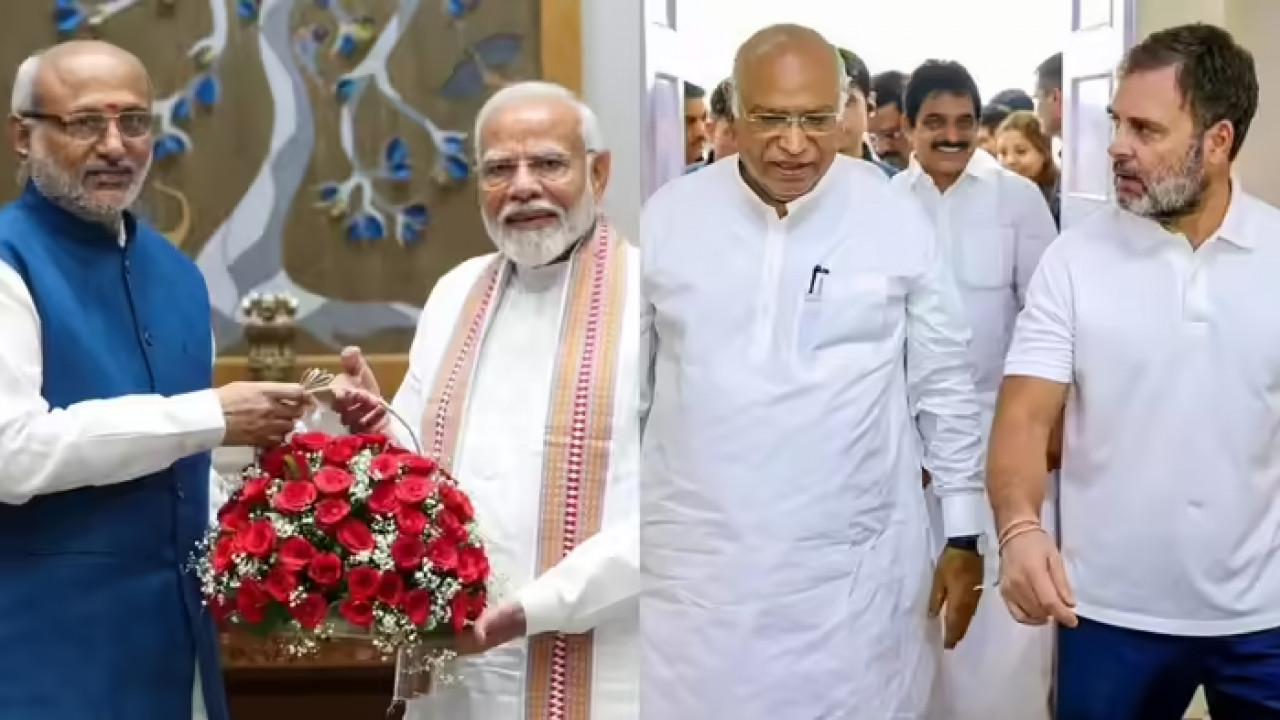
Vice Presidential Polls (Social media)
National News: The Bharatiya Janata Party (BJP) on Sunday announced that Maharashtra Governor CP Radhakrishnan will be the National Democratic Alliance (NDA) candidate for the upcoming Vice Presidential election scheduled for September 9. The declaration was made by BJP National President and Union Minister JP Nadda, who also expressed the hope that opposition parties would support the candidature to make the election uncontested.
After the announcement, Prime Minister Narendra Modi and Union Home Minister Amit Shah extended their congratulations to Radhakrishnan, commending his years of service and commitment to public life. In response, Radhakrishnan thanked both leaders for reposing faith in him and assured them that he would continue to serve the nation with full commitment.
The Vice President of India is elected by the members of both Houses of Parliament—Lok Sabha and Rajya Sabha. Importantly, nominated members of the Rajya Sabha are also part of this process. The election will decide who succeeds in holding the second-highest constitutional office of the country after the president.
At present, the total strength of both houses is 786 members, but six seats are vacant—one in the Lok Sabha from Basirhat, West Bengal, and five in the Rajya Sabha, which include four from Jammu and Kashmir and one from Punjab after AAP MP Sanjeev Arora stepped down following his victory in a state assembly by-election.
To win the vice presidential election, a candidate requires at least 394 votes. With the NDA’s current numbers, victory for Radhakrishnan looks almost certain.
Altogether, this gives the ruling coalition an estimated 422 votes, comfortably above the majority mark. This numerical edge makes Radhakrishnan’s election highly likely, unless the opposition unites behind a strong alternative—which at the moment appears uncertain.
According to Article 68 (2) of the Constitution, a vice presidential election must be held promptly if the position becomes vacant due to resignation, death, removal, or any other reason. The elected vice president holds office for a five-year term, beginning from the day he or she assumes charge.
The Vice President is not only the second-highest constitutional authority in India but also functions as the Chairperson of the Rajya Sabha, playing a crucial role in parliamentary proceedings.
The NDA’s choice of Radhakrishnan carries both political and symbolic weight. Having roots in the RSS and a long career in public life, he is known for his clean image, soft-spoken nature, and cordial politics. Supporters often describe him as the “Vajpayee of Coimbatore” because of his ability to maintain friendly relations across political divides.
By choosing him, the BJP is also indicating its plan to widen its influence in South India, particularly in Tamil Nadu, where the party aims to grow its support ahead of the 2026 assembly polls.
With strong parliamentary numbers, NDA’s pick CP Radhakrishnan appears almost certain to become the next Vice President of India. While the opposition may still announce a candidate, the ruling coalition has made it clear that it prefers a smooth, consensus-driven election. If elected, Radhakrishnan will step into one of the most significant roles in Indian politics—ensuring stability in the Rajya Sabha and representing the spirit of cooperative politics at the national level.





Copyright © 2026 Top Indian News
